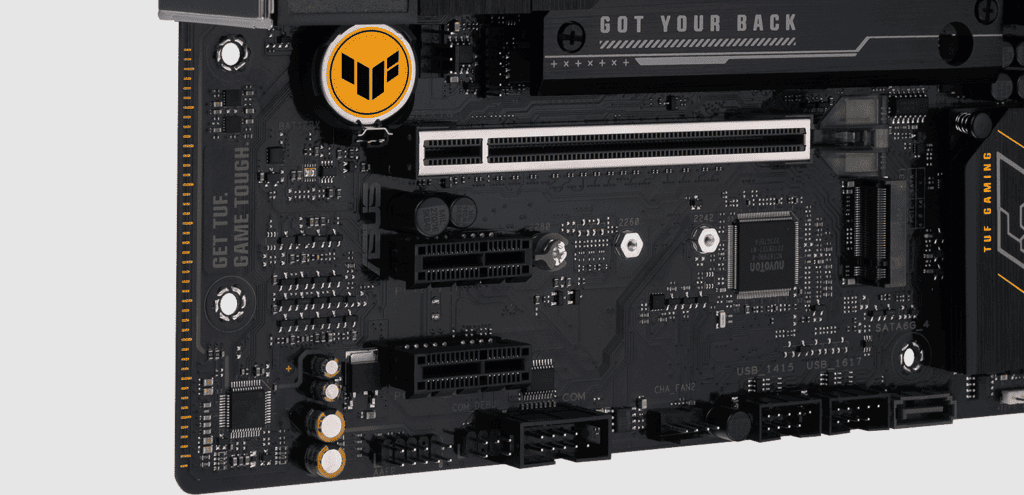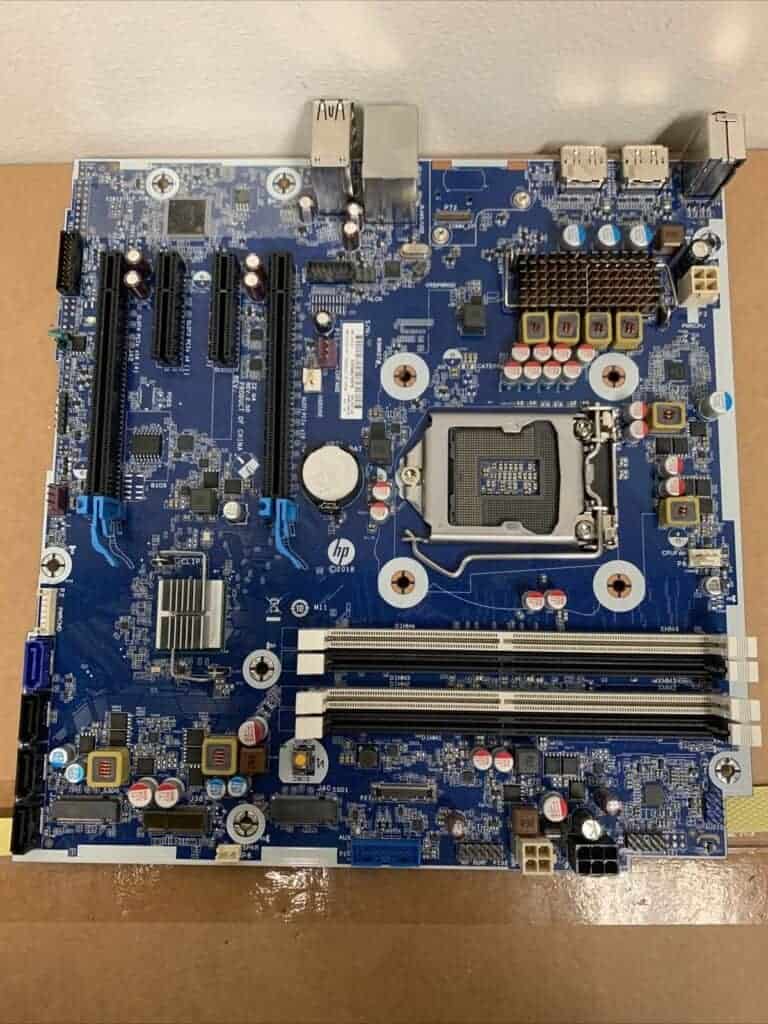The motherboard is a critical component of any computer. It connects and controls important parts such as the central processing unit (CPU) and RAM. Without it, your PC wouldn’t function. This circuit board ensures that all parts of your computer can communicate and work together. The motherboard serves as the backbone of your computer, connecting and coordinating all other components. It’s like the nervous system, allowing different parts to communicate and work together seamlessly. Understanding the role of the motherboard is important for both casual users and tech enthusiasts.
This article looks at all facets of a motherboard, covering their functions, components, types, and how to choose the right one for your needs. By understanding the role of the motherboard and its various components, you can make informed decisions when building or upgrading your computer. Whether you’re a gamer, a content creator, or a casual user, a well-chosen motherboard will provide a stable foundation for your computing experience. Motherboard design includes slots for memory, connectors for storage devices, and ports for peripherals. Many users customize their PCs by choosing different kinds of motherboards to improve performance or add features. This flexibility makes motherboards a key component for both everyday users and tech enthusiasts. Understanding the basics of motherboard architecture can help you make better choices when upgrading or building a computer. Knowing what each part does will make it easier to troubleshoot problems or enhance your system.

A Look At Motherboards
A motherboard, the unsung hero of your computer, is the central hub that connects and empowers all other components. It’s like the nervous system, allowing different parts to communicate and work together seamlessly. Whether you’re a casual user or a tech enthusiast, understanding the motherboard’s role is key to appreciating the intricate dance of technology within your device.
What Does a Motherboard Do?
The motherboard orchestrates the symphony of your computer’s operations. Its primary functions include:
- Component Connectivity: It provides slots, sockets, and connectors for the CPU, RAM, storage drives, expansion cards, and peripherals. This allows them to communicate and exchange data.
- Power Distribution: The motherboard receives power from the power supply unit (PSU) and distributes it to the various components, ensuring they have the energy to function.
- Data Transfer: It facilitates the flow of data between components, enabling them to work in harmony. This is crucial for tasks like processing information, displaying graphics, and accessing storage.

Key Components of a Motherboard
A motherboard is a complex circuit board with various components, each playing a vital role:
- CPU Socket: This is where the central processing unit (CPU), the brain of the computer, is installed. The socket type determines the compatible CPUs.
- RAM Slots: Random access memory (RAM) modules are inserted here. RAM provides temporary storage for data the CPU is actively working on.
- Expansion Slots: These slots accommodate various expansion cards, such as graphics cards, sound cards, and network adapters, adding functionality to your computer.
- Storage Connectors: These connect storage drives, like hard disk drives (HDDs) and solid-state drives (SSDs), where your operating system, applications, and files are stored.
- Chipset: This is a set of integrated circuits that control the flow of data between the CPU, memory, and other peripherals.
- BIOS/UEFI: The Basic Input/Output System (BIOS) or Unified Extensible Firmware Interface (UEFI) is firmware that initializes the hardware and loads the operating system when you turn on your computer.
Types of Motherboards
Motherboards come in various form factors, designed to fit different computer cases:
| Form Factor | Dimensions (inches) | Typical Usage |
|---|---|---|
| ATX | 12 x 9.6 | Desktop Computers |
| Micro ATX | 9.6 x 9.6 | Desktop Computers |
| Mini ITX | 6.7 x 6.7 | Small Form Factor |
Choosing the Right Motherboard
Selecting the right motherboard is crucial for building or upgrading a computer. Consider the following factors:
- CPU Socket Compatibility: Ensure the motherboard’s socket matches the CPU you intend to use.
- Form Factor: Choose a form factor that fits your computer case.
- RAM Slots and Type: Consider the number of RAM slots and the type of RAM supported (DDR4, DDR5, etc.).
- Expansion Slots: If you plan to add expansion cards, ensure the motherboard has the necessary slots.
- Features: Look for features like onboard Wi-Fi, Bluetooth, audio, and M.2 slots for high-speed storage.
Key Takeaways
- A motherboard is a crucial part of a computer that connects major components.
- It holds the CPU, RAM, and other hardware.
- Knowing about its design can help in upgrading or building a PC.
Fundamentals of Motherboard Architecture
Motherboards are integral to any computing device. They connect various components like the CPU, memory, and storage. Understanding their design helps in choosing the right one for a computer build.
Components and Connectors
Motherboards have several key components and connectors. USB ports let you connect peripherals like keyboards and mice. SATA ports connect hard drives and SSDs for storage. Power connectors supply the necessary power from the power supply unit. Fan headers control cooling fans to manage temperature. Audio jacks support headphones and microphones. There are also Ethernet ports for wired internet connections. Each connector has a specific role, providing the motherboard with both power and connectivity to other parts of the computer.
Expansion Slots and Storage Interfaces
Expansion slots allow users to add various cards to enhance the system’s capabilities. PCI and PCI Express (PCIe) slots enable the addition of graphics cards, sound cards, and network cards. Older systems might use ISA slots, though they are less common now. Storage interfaces like SATA ports connect storage devices such as hard drives and SSDs. M.2 slots are newer and support high-speed NVMe drives, providing faster data access. These slots expand the system’s functionality without needing an entirely new motherboard.
Central Processing Unit (CPU) Compatibility
The motherboard’s CPU socket determines which processors are compatible. Common sockets include LGA, AM4, and Socket 1200. The motherboard must match the specific CPU type. The compatibility ensures that the CPU can physically fit and communicate with the board. Voltage regulator modules (VRMs) on the motherboard help manage the power the CPU receives. CPU compatibility affects performance and potential upgrades, making it crucial to match the motherboard with the appropriate CPU.
Memory (RAM) Support
Motherboards have memory slots or DIMM slots that hold RAM modules. Different boards support varying amounts and types of RAM, like DDR4 or DDR5. The number of slots also affects the maximum memory capacity. Some motherboards support dual-channel memory architecture, offering better performance. Compatibility with RAM speed is essential, as mismatched speed can lead to suboptimal performance. Ensuring the right memory type and capacity maximizes the system’s efficiency.
Form Factors and Computer Cases
Motherboards come in different sizes, known as form factors. Common sizes include ATX, MicroATX, and Mini-ITX. The form factor impacts the motherboard’s dimensions and layout. ATX motherboards are large and support multiple expansion slots and memory modules. MicroATX and Mini-ITX are smaller, suitable for compact builds. The form factor also determines the type of computer case needed. The chosen form factor affects available features and the build’s overall size.
Chipset Functions and Bus Architectures
The motherboard’s chipset controls communication between the CPU, memory, and peripheral devices. Common chipsets include Intel’s Z-series and AMD’s B-series. The chipset affects features like USB ports, SATA ports, and expansion slot connectivity. Bus architectures like the PCIe bus enable high-speed data transfer between components. The chipset’s quality impacts system performance and feature support. A robust chipset ensures seamless communication and optimal operation of the motherboard’s components.
Frequently Asked Questions
This section answers common questions about motherboards. Learn about their functions, components, connections, materials, types, and impact on performance.
What are the primary functions of a motherboard?
The motherboard connects all parts of a computer. It sends signals and power to different components, ensuring they work together. It also holds the CPU, memory, and other key parts.
What components are typically included on a motherboard?
A motherboard usually has a CPU socket, RAM slots, PCIe slots, and storage connectors. It also includes power connectors, input/output ports, and sometimes a graphics card slot.
How does a motherboard connect different parts of a computer system?
The motherboard connects parts through slots, sockets, and ports. It uses buses to transmit data and power. For example, the CPU connects to the RAM through a memory bus, and storage devices connect through SATA or NVMe ports.
What materials are commonly used to construct a motherboard?
Motherboards are typically made from fiberglass-reinforced epoxy. They also contain metal traces for electrical connections and various electronic components, like resistors and capacitors, soldered onto the board.
In what ways do various types of motherboards differ?
Motherboards differ in size, known as form factors. Common types include ATX, microATX, and mini-ITX. They also vary in the number of slots and ports they offer, as well as the compatibility with different CPUs and RAM.
What role does the motherboard play in overall computer performance?
While the CPU and GPU mainly decide performance, the motherboard affects them by providing power and connectivity. A good motherboard can support faster data transfer rates and more efficient power management.







